

Arduino uno - microcontroller without computer possibe? Boston Acoustics US. PLEASE NOTE: Price as shown is for 1 pair of speakers. 2-way 7" High Performance Outdoor Speakers. 7" copolymer DCD™ woofer offers extended excursion with maximum bass response. 1" Kortec® soft dome tweeter delivers a smooth and natural high-frequency response.
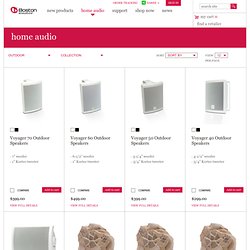
Enclosures, grilles, hardware, cones, surrounds, and gaskets stand up to weather and temperature extremes {*style:<a href='javascript:void(0);'>*}Voyager 70 Outdoor Speakers 7” woofer1” Kortec tweeter PLEASE NOTE: Price as shown is for 1 pair of speakers. 2-way 6½" High Performance Outdoor Speakers. 6½" copolymer DCD™ woofer offers extended excursion with maximum bass response. 1" Kortec® soft dome tweeter delivers a smooth and natural high-frequency response. Bowers and Wilkins Architectural Monitor 5" 100W 2Way IndoorOutdoor Loudspeakers Pair AM-1 BLACKPAIR.
Seasonal savings on TVs, laptops, tablets, smartphones and more.
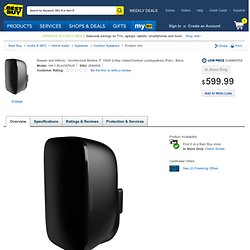
Shop now › <div id="bbyalert-warning" ><div class="bbyalert-header"><div class="bbyalert-icon"><span class="warning-icon"></span></div><div class="bbyalert-text">We're sorry, it appears that JavaScript is disabled in your browser. To view the full content of BestBuy.com, please enable JavaScript. </div></div></div> Enlarge.
Arduino to Max/MSP via OSC (Guide and Example Code) "This Article is a guide complete with example code and downloads that allows you to send and receive data between an independent Arduino microcontroller (with no external Ethernet Shield) and Max/MSP using Processing software and the OSC protocol, as well as introducing alternative methods.
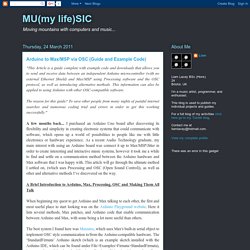
This information can also be applied to using Arduino with other OSC-compatible software. The reason for this guide? To save other people from many nights of painful internet searches and numerous coding trial and errors in order to get this working successfully. " A few months back... I purchased an Arduino Uno board after discovering its flexibility and simplicity in creating electronic systems that could communicate with software, which opens up a world of possibilities to people like me with little electronics or hardware experience. A Brief Introduction to Arduino, Max, Processing, OSC and Making Them All Talk. Blog Archive » MicroLS (part 1) Part 1, 2, 3 MicroLS stands for micro Light Show!

Let’s have some fun with Arduino for a time! [Javascript required to view Flash movie, please turn it on and refresh this page] Behind the scene of MicroLS are quite powerful functions that most of Arduinoos visitors are familiar with. MicroLS makes an extensive use of two popular libraries: PlainADC and PlainFFT. Let’s start with hardware. Here is an alternative circuit: the audio signal is taken from a microphone and amplified with a single stage pre-amplifier.
Advanced users shall feel free to interface Arduino to real spot lights, and add more channels. Please check appropriate documentation, and be careful at interfacing AC devices. Next post on same subject. Arduino Sound – Part 1. This is the first in a series of articles about generating sound with an Arduino. The goals are to generate good quality sound which can be used to play simple tones, stored music, sampled sound, and even act as a MIDI synthesizer. I will cover the basic design, including code and hardware that anyone can use to add sound to Arduino microcontroller projects. The first step is to look what has already been done. We want to explore many possible options for sound generation and resolve which is best for given situations. I hope to spark some discussion so please comment with information links, advice, suggestions and general opinions. BackgroundSound is an important part of perception and an excellent way for a microcontroller to interact with humans (and other animals).
If you don’t understand how sound works or what frequency means try reading up on the subject at Wikipedia. Prior WorkI am not the first to work on this problem and it has been solved by others. Works: MIDI-IN: code + schematics. There should some way to get rid of it, it doesn't make sense electrically.

Anyway... have you tried a PC900? That's the opto with a digital output. actually i used a 4n28, because i use them for anything ;-) i got them quite cheap, and still have plenty lying around. on the other hand, i like the idea of having "standard parts". having found the 100k-solution, even more binds me to my little 6-leggers, as i begin to get a feeling for what they can do, and what they can't. :-? Still i put the pc900 on my shopping list. Unsped's arduino shields. Led Plastic Light Pyramid Light - Buy Pyramid Light,Cheap Lighting,Led Plastic Light Pyramid Light Product on Alibaba. LED Plastic Light Pyramid Light 1.Material: PE 2.High quality 3.Certification:CE,ROHS 4.Waterproof:IP65 LED Plastic Light Pyramid Light Description: 1.8PCS Built-in color changing LED.2.
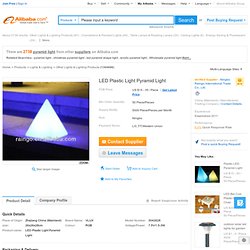
Inductive recharging, Seven colors can display the swap3. The pause function allows your desired color to be held.4. 9. Livid DIY MIDI Products. Livid Builder is a line of Do-It-Yourself parts that make it easy for makers to design their own physical computing devices and MIDI control surfaces using buttons, knobs, encoders, velocity pads, arcade buttons, accelerometers, faders, other sensors, and talkback LED’s.
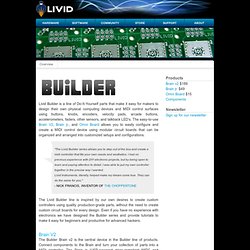
Ripple - seeper. Videos - AmpTone Lab.